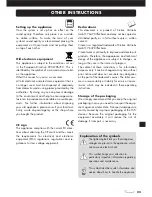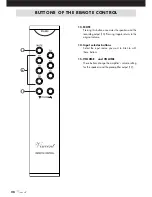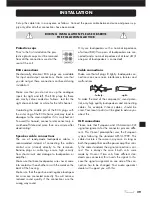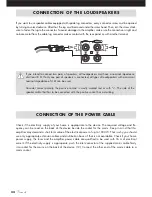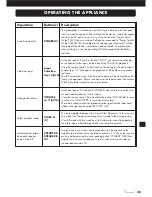
Vincent
33
CONNECTION OF THE LOUDSPEAKERS
R
L
Left
loudspeaker
backside
Right
loudspeaker
backside
If a loudspeaker is to be connected with “bi-wiring”, both pairs of loudspeaker clamps may be used at
the same time. In contrast to connection of the loudspeakers with one loudspeaker cable each, with bi-
wiring a suitable loudspeaker is connected via two separate two-wire loudspeaker cables or one four-
wire loudspeaker cable to the pair of output clamps on the main amplifier. This doubles the cabling
required but for many combinations of loudspeakers and amplifiers this improves the sound quality.
Before changing the system to bi-wiring, the metal bridges fitted to the
loudspeaker’s double connector in normal operation must be removed.
Only loudspeakers with these bi-wiring terminals are suitable. Filtering
of the entire frequency range occurs in the now separated loudspeaker
crossover networks. One cable is to be connected to the loudspeaker’s
sockets provided for the higher frequencies (treble) and the other with
the ones for the lower frequencies (bass) for each loudspeaker. Make
sure that the polarity is correct. Your specialist dealer will provide you
with advice and assistance.
If you are using ready made loudspeaker
cables with 4 mm banana plugs, all you need
to do is connect the two plugs on each loud-
speaker cable end to the two associated spea-
ker connectors. Turn the connector screws clock-
wise to fasten them.
If no connector is to be used, remove approxi-
mately 1 cm length of insulation from each end
of the speaker wire. Twist the braid in order to
avoid short circuits. Turn the fastener on the
loudspeaker terminal counter clockwise to loo-
sen it and introduce the bare wire end into the
exposed connector hole. Then turn the fastener
clockwise so that the wire is firmly clamped.
Make sure the connection is pretty tight.





